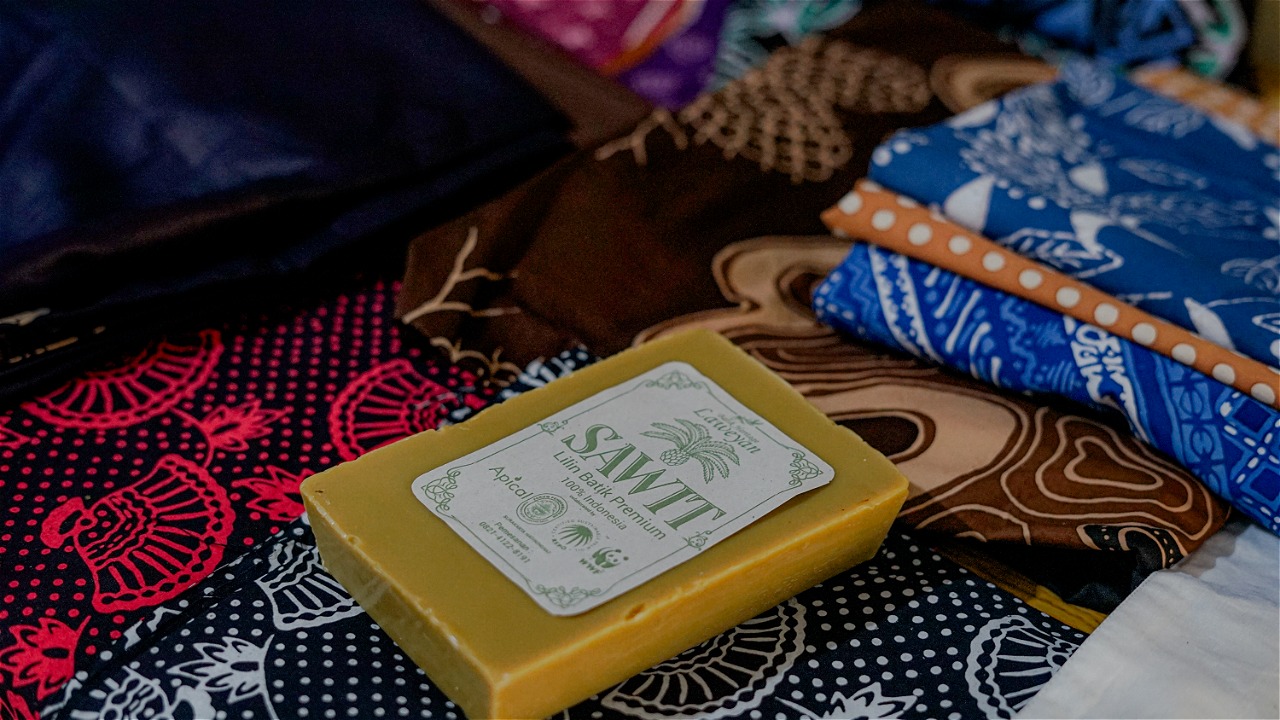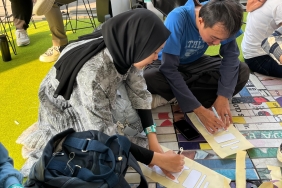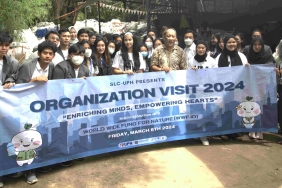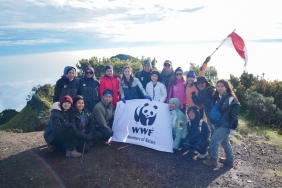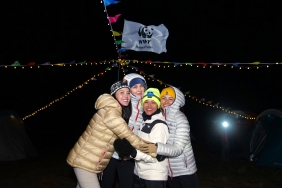KAMPOENG BATIK LAWEYAN: THE INTERSECTION OF HISTORY, CULTURE, AND ENVIRONMENT
As one of the series of activities leading up to Gelaran Ramah Bumi, a public campaign initiated by WWF-Indonesia to introduce responsible consumption principles. As part of the effort to encourage sustainable commodities, especially palm oil derivatives, WWF-Indonesia together with WWF-Indonesia Members of Nature visited Kampoeng Batik Laweyan, one of the cultural icons in Solo City that has many stories about the heritage of cultural traditions that are also related to the environment.
Beginning in 1546 the name "Laweyan" was taken from the word "Lawe," which means thread. At that time, Laweyan residents were known as people who made yarn, so this area became the center of yarn processing.
As time went by, the production of Laweyan people continued to develop from just yarn to fabrics, including batik. Thriving through batik products in local to international markets, Batik Laweyan can be said to be one of the cultural symbols that has managed to survive until today. In its journey, Batik Laweyan also faced ups and downs that influenced the creation of Forum Pengembangan Kampoeng Batik Laweyan (FBKPL), a forum that manages and develops batik in Laweyan focusing on cultural and environmental preservation.
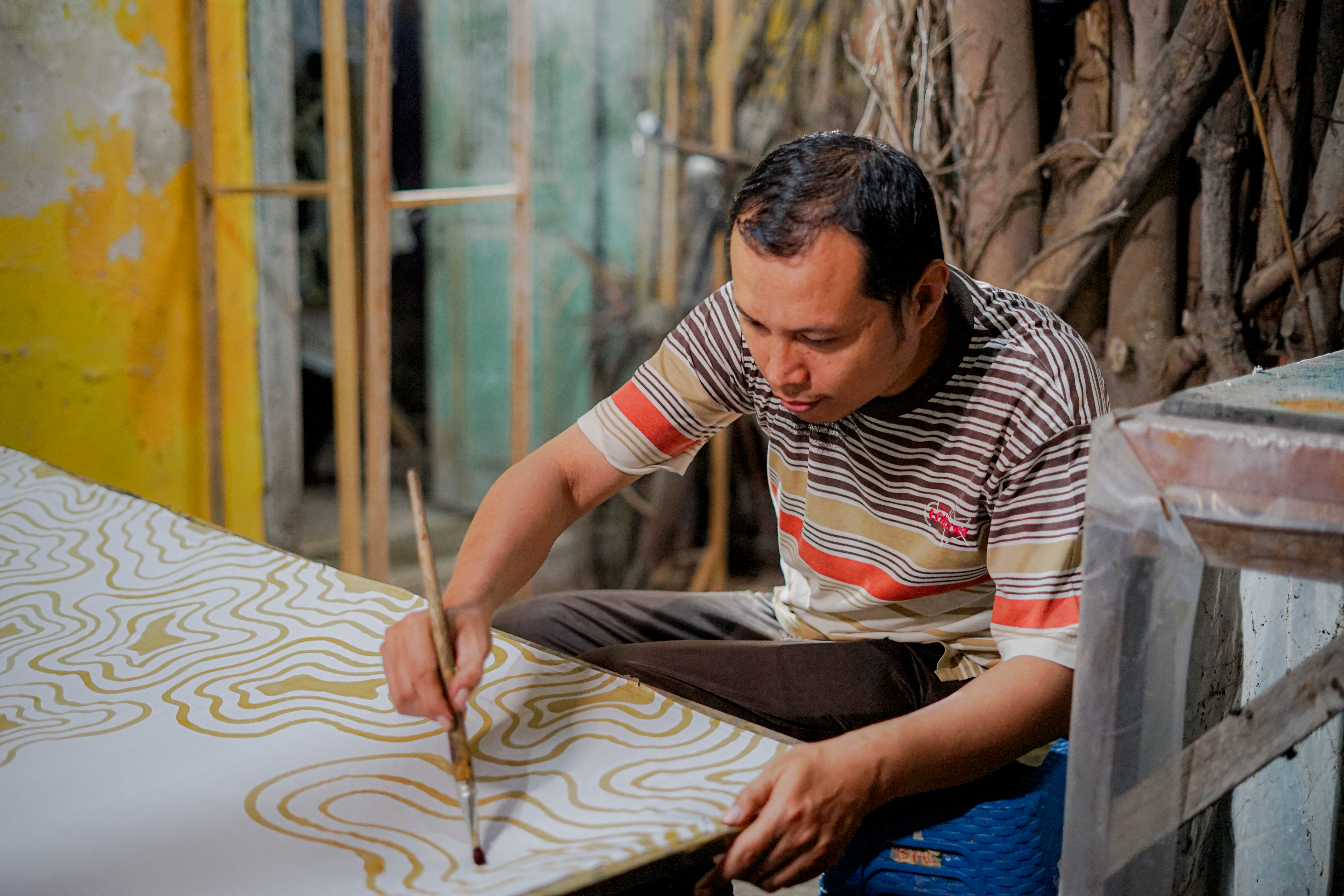
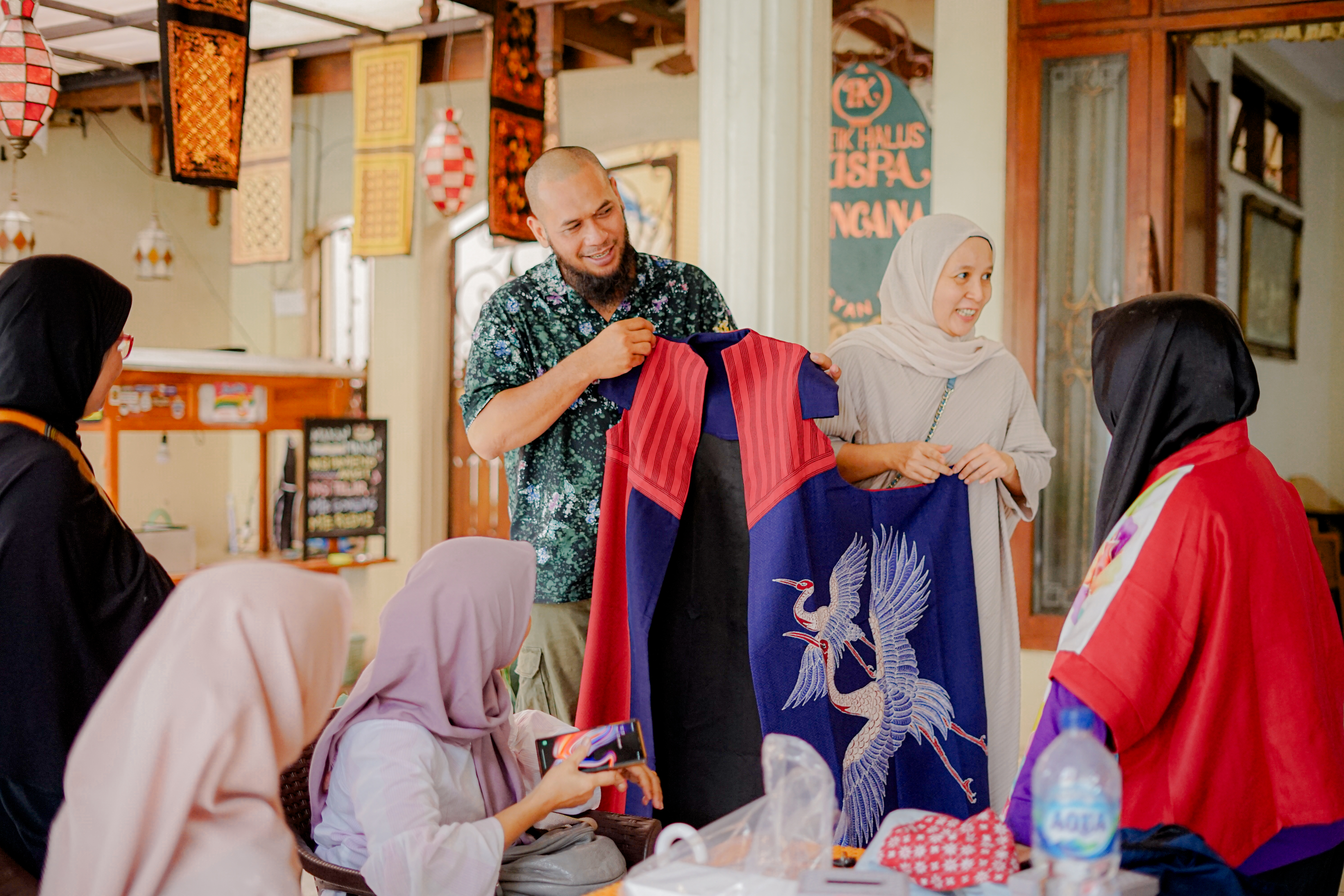
WWWF-Indonesia's Support in Encouraging Environmental Initiatives in Kampoeng Batik Laweyan
WWF-Indonesia has been cooperating with Kampoeng Batik Laweyan Development Forum. In line with WWF-Indonesia's goal of supporting sustainable commodity products, WWF-Indonesia provided assistance in the development of Sustainable Action Plans and also provided trainings related to sustainable products that took place in the July-October 2024 period to several members of the Kampoeng Batik Laweyan Development Forum, namely Batik Isma Laweyan, Batik Mahkota Laweyan, Batik Tjap Tiga Negeri, and Batik Tumaruntun Laweyan. In addition, WWF-Indonesia also ordered batik that has used sustainable palm oil raw materials from Kampoeng Batik Laweyan.
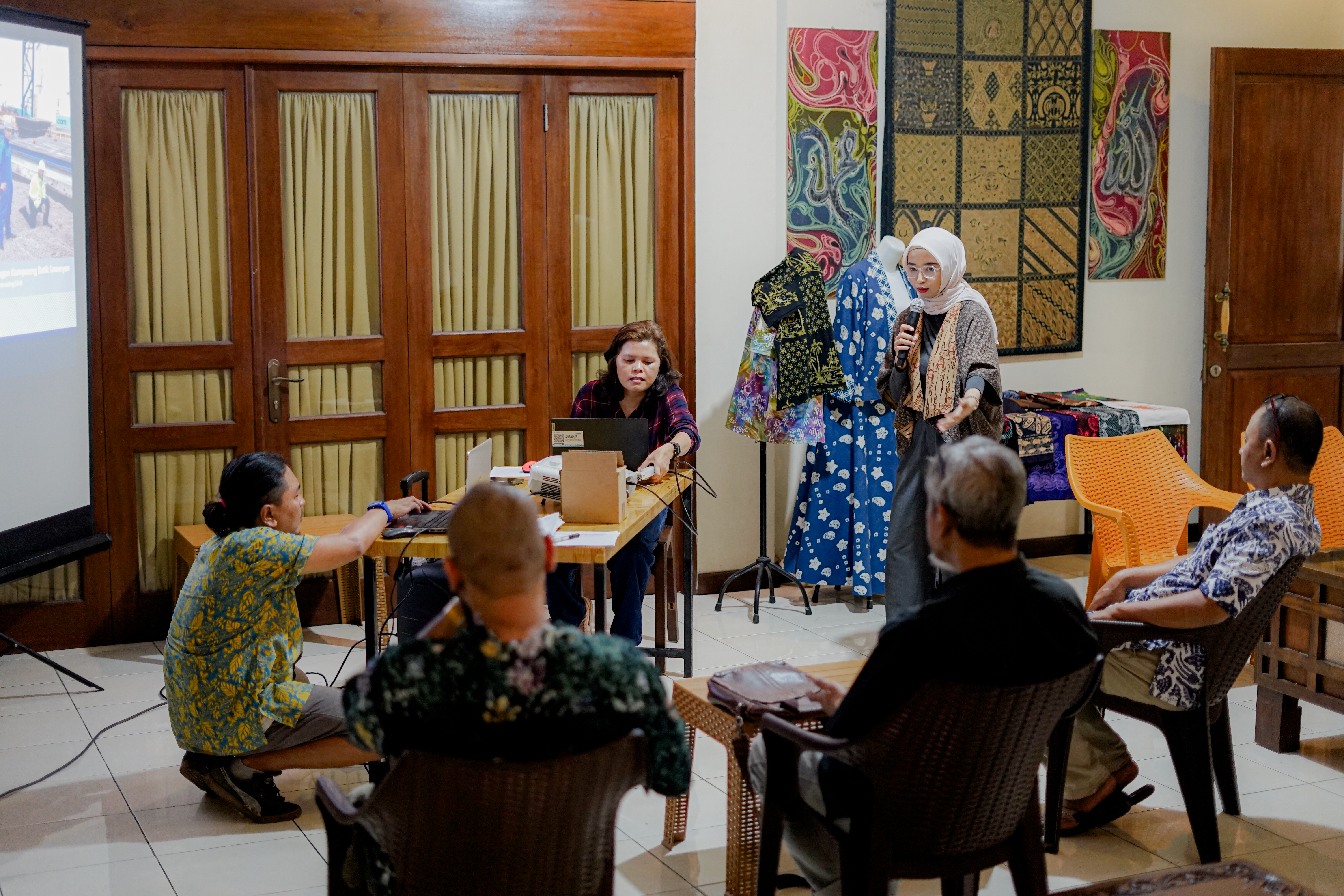
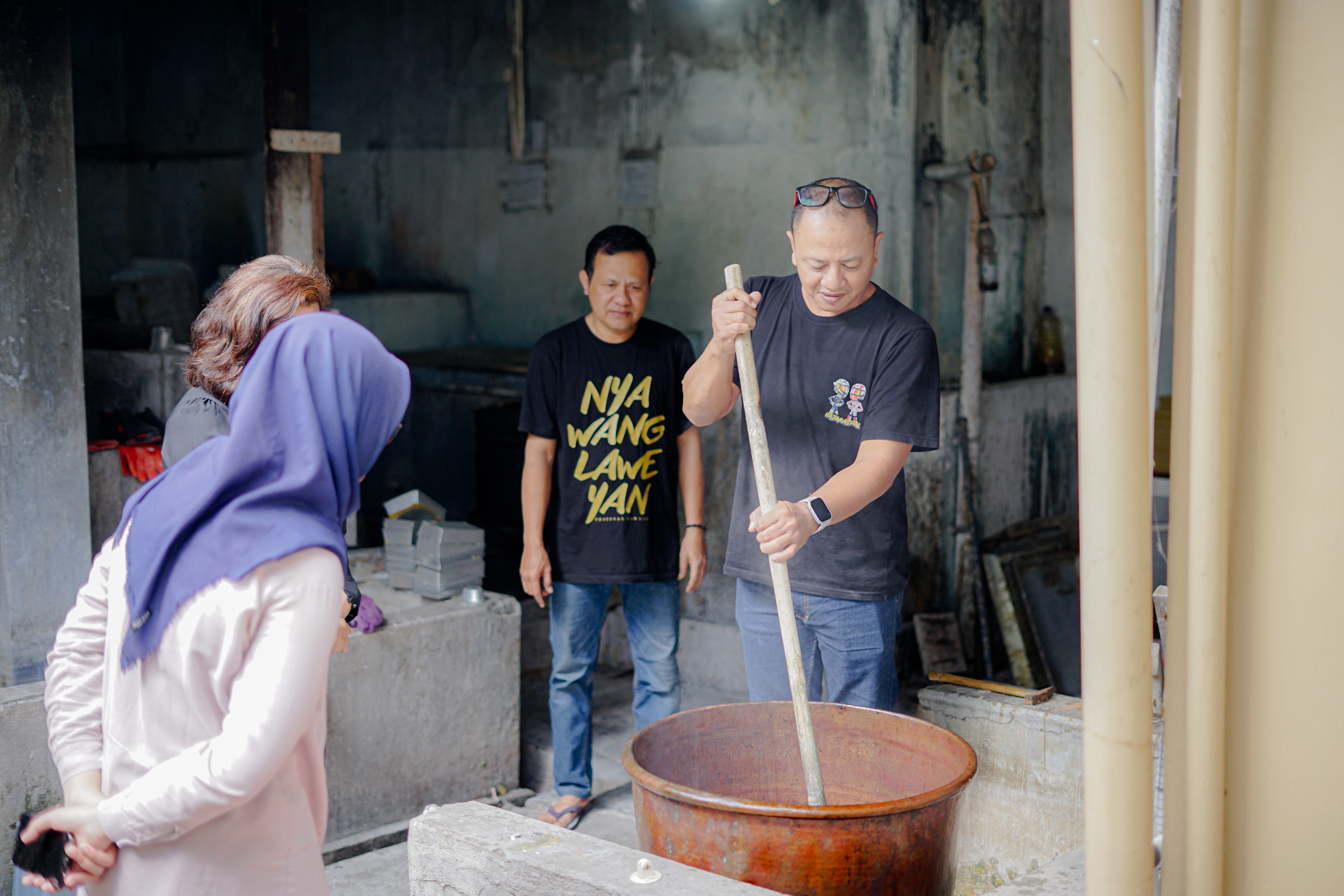
Towards an Eco-Friendly Batik Village
One of the important aspects of Kampoeng Batik Laweyan is environmental sustainability. As stated by Mr. Setiawan Muhammad, who is the Daily Chairperson of the Kampoeng Batik Laweyan Development Forum, "We are already very concerned with the environment, with the communal IPAL so that the waste in this village environment has been managed together". The forum is committed to integrating environmentally friendly practices in every aspect of batik production.
With these various initiatives, Kampoeng Batik Laweyan has a vision to become an environmentally friendly batik production center or what is called Solo EcoBatik. These steps not only make Laweyan a pioneer in environmental innovation, but also strengthen its position as a cultural icon that is able to adapt to the demands of the times.
Through good waste management, the use of natural materials, and the utilization of renewable energy, Kampoeng Batik Laweyan has shown that tradition and sustainability can go hand in hand. With the spirit of innovation and environmental preservation, Laweyan is a living proof of how local communities can make a great contribution to the culture and ecosystem. Hopefully, there will be more local communities in Indonesia that not only preserve cultural heritage, but also play an active role in preserving the environment.
FPKBL Program on Sustainability
1. Use of Sustainable Palm Oil Batik Wax
WWF Indonesia, together with the Roundtable on Sustainable Palm Oil (RSPO), assisted FPKBL to use batik wax made from sustainable palm oil. This initiative aims to reduce the environmental impact of the batik production process and support environmentally friendly industrial practices. One of the innovations developed is the use of palm wax from HPS (Hydrogenated Palm Stearin) as a raw material for making batik. Palm wax is more environmentally friendly than conventional wax, thus becoming an important part in the production of eco-batik. Kampoeng Batik Laweyan works closely with raw material suppliers to ensure the availability of quality palm wax.
2. Communal WWTP Construction
Referring to the "Green Eco Batik" concept being developed by FPKBL as an effort to reduce environmental pollution, especially in the surrounding rivers, the community of Kampoeng Batik Laweyan built a communal wastewater treatment plant (IPAL) as an effort to reduce the impact of waste from the batik production process. This project is the result of cooperation with the central government and NGOs. The WWTP allows for the collective treatment of waste from various artisans in the village, so that the water discharged into the river is clean and safe.
3. Use of Natural Dyes
FPKBL is also committed to replacing synthetic dyes with natural dyes. Residents plant various types of trees on riverbanks and vacant lots that produce natural dyes for batik. This step is not only environmentally friendly, but also helps maintain soil quality and the surrounding environment.
4. Solar Energy Utilization
Kampoeng Batik Laweyan started implementing renewable energy by installing solar panels in several SMEs. Solar energy is utilized to support batik production, while reducing dependence on conventional electricity. This step is part of the village's vision to become a prime mover in the use of sustainable energy in the batik sector.

